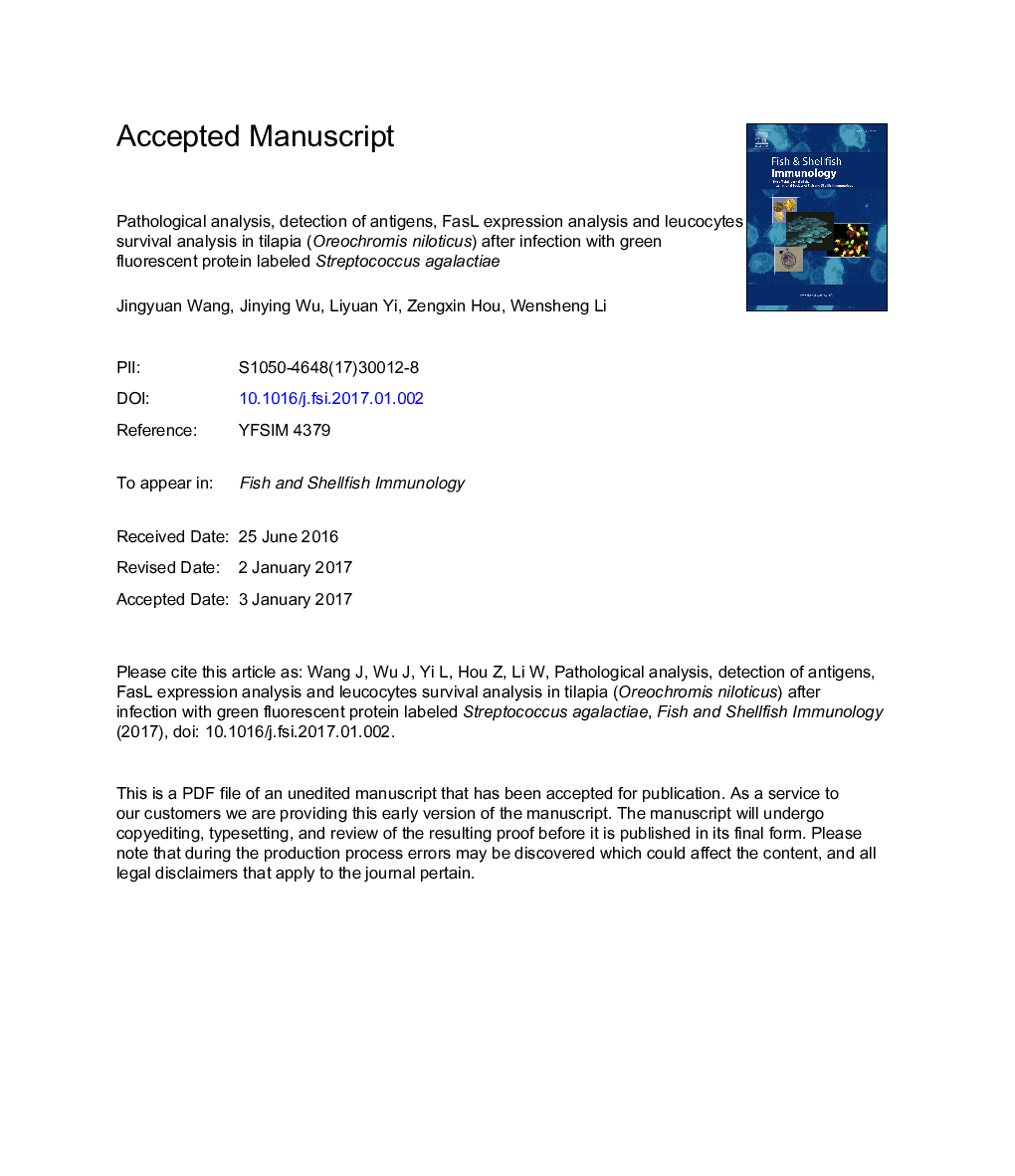| Article ID | Journal | Published Year | Pages | File Type |
|---|---|---|---|---|
| 5540553 | Fish & Shellfish Immunology | 2017 | 23 Pages |
Abstract
The pathogenesis of Streptococcus agalactiae infection in tilapia has not been fully described. To understand this, we investigated the clinic-pathological features of acute experimental septicemia in tilapia (Oreochromis niloticus) after receiving an intra-peritoneal injection with S. agalactiae THN-1901GFP. Immunohistochemistry and sections of pathological tissues were used to estimate the level of damage in the head-kidney, liver, spleen and trunk-kidney. The expression of FasL was analyzed by western blotting in these samples based on their damage levels. Leucocytes were isolated from the head-kidney and incubated with S. agalactiae THN-1901GFP. Then, phagocytosis, programmed cell death and the expression of FasL were analyzed. The infected tissues showed varying degrees of necrosis and histolysis. The serous membrane of the intestine was dissolved by S. agalactiae THN-1901GFP. Antigens of S. agalactiae THN-1901GFP accumulated in different parts of the infected organs. In the head-kidney and spleen, the expression of FasL was up-regulated in parallel with increased tissue damage. After being incubated with S. agalactiae THN-1901GFP, the phagocytic capacity and ability were both very high and the expression of FasL remained high in leucocytes. S. agalactiae THN-1901GFP was able to survive for a long period of time after being engulfed by phagocytic cells. These findings offer insight into the pathogenesis of S. agalactiae infection in tilapia.
Related Topics
Life Sciences
Agricultural and Biological Sciences
Aquatic Science
Authors
Jingyuan Wang, Jinying Wu, Liyuan Yi, Zengxin Hou, Wensheng Li,
